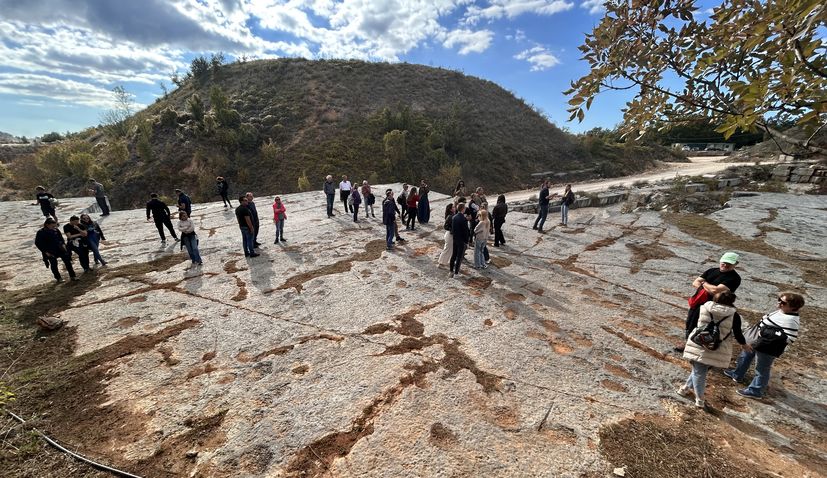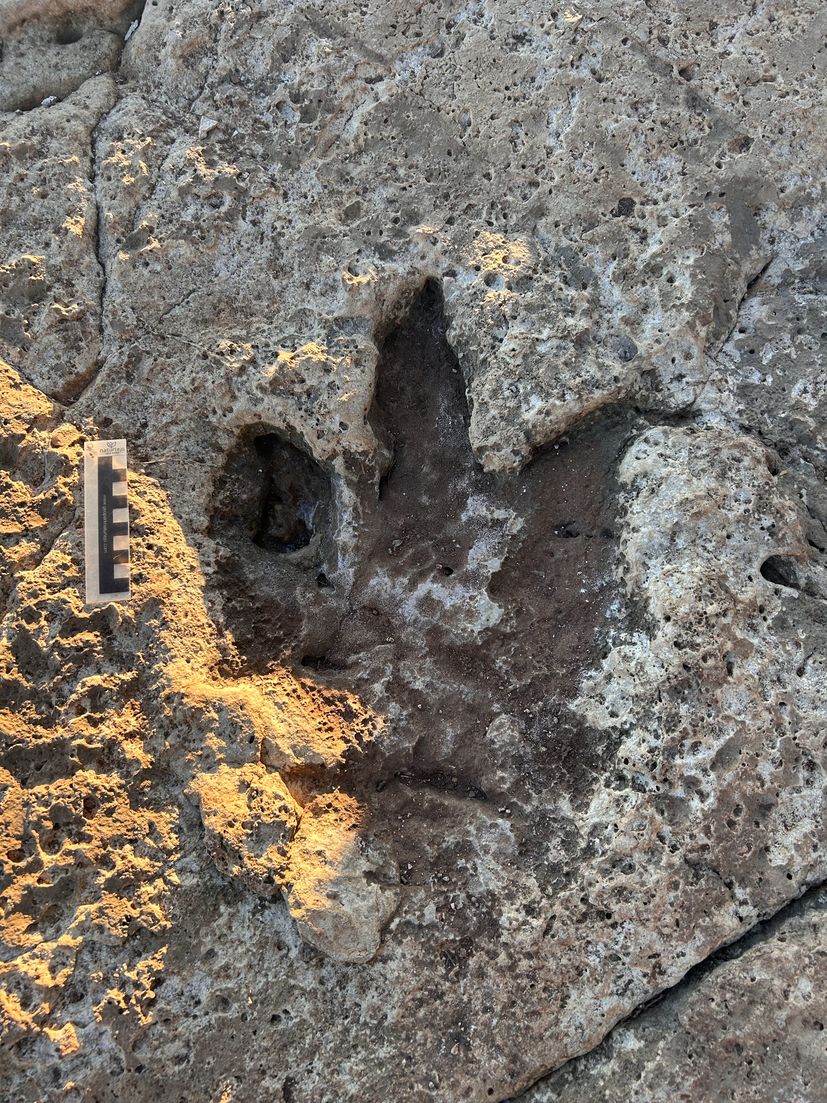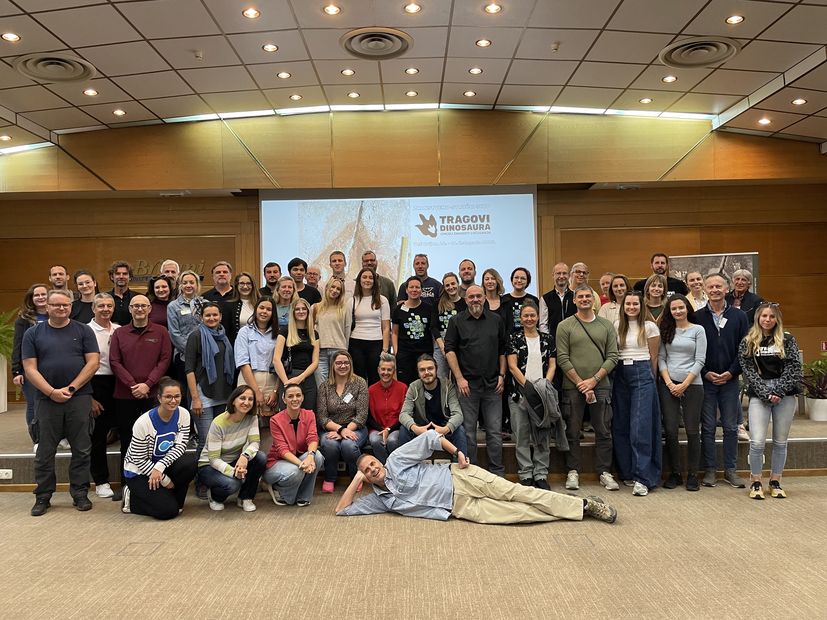by croatiaweek
October 21, 2025
in

(Photo: NP Brijuni)
From 14 to 16 October 2025, the Croatian island of Veliki Brijun hosted the First Scientific and Professional Conference “Dinosaur Tracks – Between Science and Conservation”, organised by the Public Institution Brijuni National Park.
The event brought together 80 participants from Croatia and Slovenia, including geologists, palaeontologists and representatives of public institutions responsible for managing and protecting fossilised dinosaur footprints.
The main aim of the conference was to connect researchers and professionals, enabling them to share knowledge on the latest palaeontological findings, discuss methods for preserving and presenting geoheritage, and strengthen cooperation among institutions working to safeguard fossil sites.
Brijuni National Park holds a special place in Croatia’s geological and palaeontological landscape.
Over 200 dinosaur footprints have been discovered at four sites across the park – on Veliki Brijun and the nearby islands of Vanga, Galija and Vrsar.
These traces date back approximately 100 to 130 million years.
One of the most significant sites is Cape Ploče on Veliki Brijun, where Austrian amateur palaeontologist Adolf Bachofen von Echt first published a scientific description of the tracks exactly a century ago, in 1925.

(Photo: NP Brijuni)
During the three-day programme, participants explored a wide range of topics, including research methodologies for palaeotracks, strategic approaches to protection and interpretation, and field visits to key fossil sites to exchange experiences and examples of good practice.
The conference was organised by Brijuni National Park, in cooperation with Public Institution Kamenjak, Public Institution Natura Histrica, the Ministry of Environmental Protection and Green Transition, the Department of Geology at the Faculty of Science, University of Zagreb, and the Croatian Geological Society.

(Photo: NP Brijuni)
This first-of-its-kind conference marks an important step towards raising awareness of Croatia’s geological and palaeontological heritage, particularly in Istria and the Brijuni archipelago.
It also highlights the value of continued collaboration between the scientific community, heritage managers and the wider public in ensuring the protection of these irreplaceable natural treasures.
